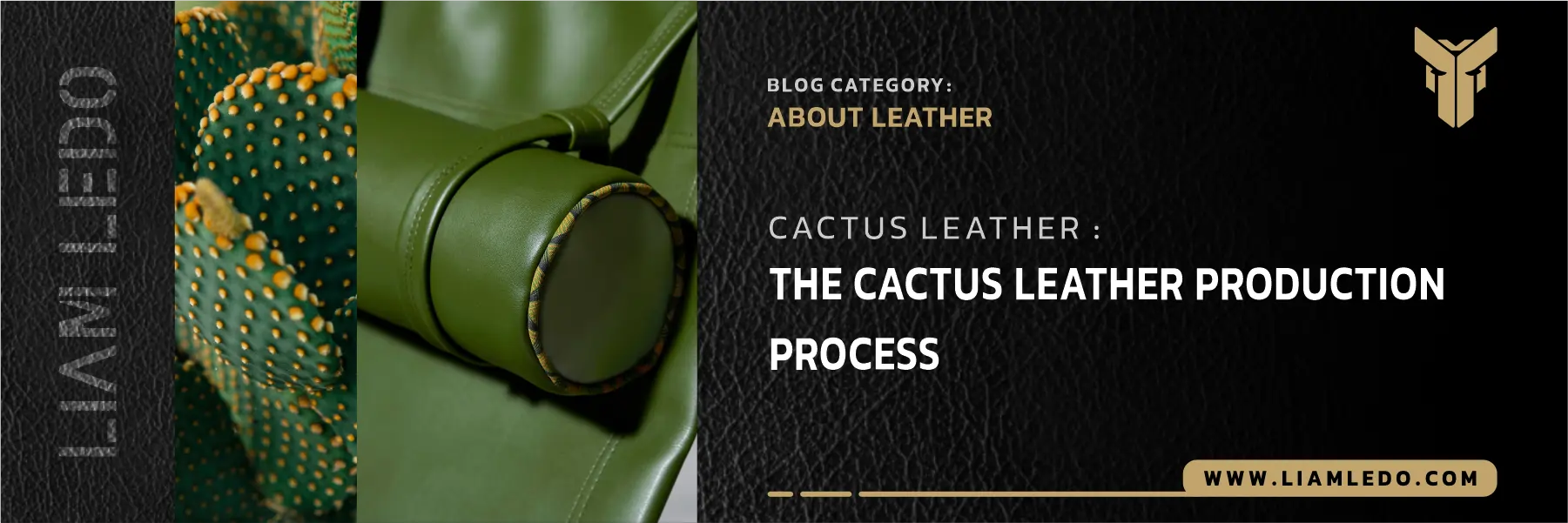
Introduction:
The fashion industry has long been criticized for its heavy reliance on animal leather, a material associated with deforestation, pollution, and animal cruelty. As environmental awareness grows, designers and conscious consumers are actively seeking eco-friendly alternatives. One of the most exciting innovations in sustainable fashion is cactus leather.
This comprehensive cactus leather review will explore what cactus leather is, how it’s made, its benefits, challenges, and how it compares to other vegan leather alternatives. Whether you’re a fashion enthusiast, ethical shopper, or affiliate marketer, this guide will help you understand why cactus leather is gaining traction across industries.
Learn more about leather and make better choices:
What is Cactus Leather?
Cactus leather is a plant-based material derived from the mature leaves of the Nopal cactus, also known as the prickly pear. Marketed prominently under the brand name Desserto, it was developed by Mexican entrepreneurs Adrián López Velarde and Marte Cázarez.
Unlike synthetic vegan leathers, which often contain plastic and petroleum-based components, cactus leather is biodegradable, non-toxic, and made with minimal environmental impact. It provides a natural alternative that aligns with sustainability goals without compromising style or functionality.

How Is Cactus Leather Made?
The production of cactus leather involves an eco-conscious, multi-step process:
- Cultivation: Nopal cacti grow in arid regions and require no additional irrigation. They thrive without chemical fertilizers or pesticides, making them one of the most sustainable crops in textile production.
- Harvesting: Only mature leaves are selected for harvesting, ensuring the plant remains unharmed and continues to grow. This allows repeated harvesting every 6 to 8 months.
- Sun Drying: The harvested leaves are dried in the sun for several days, reducing energy consumption compared to mechanical drying.
- Processing: The dried cactus fibers are ground into powder and blended with natural, non-toxic ingredients to create a leather-like material. No harsh chemicals are used in this process.
- Dyeing and Finishing: The resulting material is dyed using organic pigments and finished into sheets that can be used for products such as wallets, handbags, shoes, and even car interiors.
Benefits of Cactus Leather:
Cactus leather offers a wide range of benefits that make it an appealing choice for both manufacturers and consumers. In this cactus leather review, here are the most notable advantages:
- Eco-Friendly: Its cultivation and processing use significantly less water and energy compared to animal leather or synthetic vegan options.
- Cruelty-Free: No animals are harmed in the making of cactus leather, making it ideal for ethical fashion brands and vegan consumers.
- Durability: Cactus leather is naturally tough, resistant to abrasion, and has a high tensile strength—comparable to genuine leather.
- Breathability and Comfort: It provides better breathability than plastic-based faux leathers, making it suitable for items like footwear and apparel.
- Design Versatility: Cactus leather comes in various textures and colors, making it highly versatile for creating handbags, jackets, belts, and more.
Challenges and Considerations:
While cactus leather is a promising alternative, it is not without its challenges:
- Higher Production Costs: Being a newer technology, cactus leather production is still more expensive than mass-produced PU or PVC alternatives.
- Limited Availability: As of now, only a few companies like Desserto produce cactus leather at scale, which limits its presence in the mainstream market.
- Public Awareness: Many consumers are still unfamiliar with the term “cactus leather,” which means more educational content and product promotion is needed to drive adoption.

Cactus Leather vs Other Vegan Leathers:
Many consumers compare cactus leather to other sustainable materials like Piñatex (pineapple leather), mushroom leather (Mylo), and synthetic vegan leather. Here’s how it stacks up:
| Synthetic Vegan Leather | Piñatex | Cactus Leather | Feature |
| Usually No | Partially | Yes | Biodegradable |
| High | Moderate | Very Low | Water Usage |
| Medium | Medium | High | Durability |
| No | Partially | Yes | Chemical-Free |
| Low | Low | High | Breathability |
From this comparison, it’s clear that cactus leather offers a strong balance of sustainability, durability, and ethical sourcing, making it one of the most appealing plant-based leathers on the market.
Popular Applications:
Cactus leather has already been adopted by various industries, including:
- Fashion and Accessories: Brands are using cactus leather to produce wallets, handbags, belts, and jackets. Searches like “best cactus leather bags” and “cactus leather wallet review” are becoming more common among eco-conscious shoppers.
- Footwear: Shoes made from cactus leather are breathable, durable, and stylish—ideal for consumers seeking cruelty-free options.
- Home and Furniture: Cactus leather upholstery is now being explored for furniture and car interiors, especially in luxury segments aiming for sustainability.
- Automotive Industry: Some manufacturers, including BMW, have shown interest in sustainable interior materials like cactus leather as part of their green initiatives.
Conclusion:
Based on this cactus leather review, the answer is a resounding yes. With its eco-friendly production, impressive durability, and ethical foundations, cactus leather stands out as one of the most promising alternatives to traditional leather. Though it’s still gaining popularity, its benefits far outweigh its limitations.
For consumers who prioritize sustainability and cruelty-free fashion, cactus leather is more than just a trend—it’s the future.
Source: The Gentleman’s Gazette | Wikipedia






